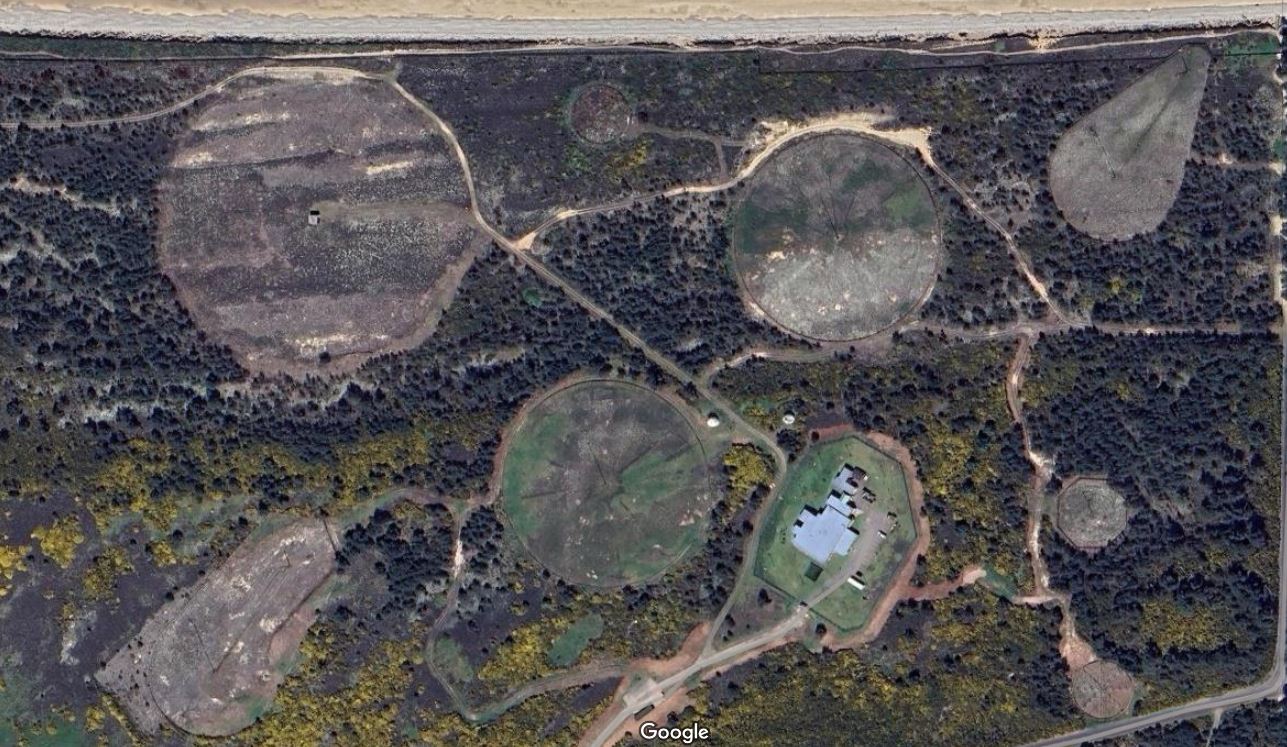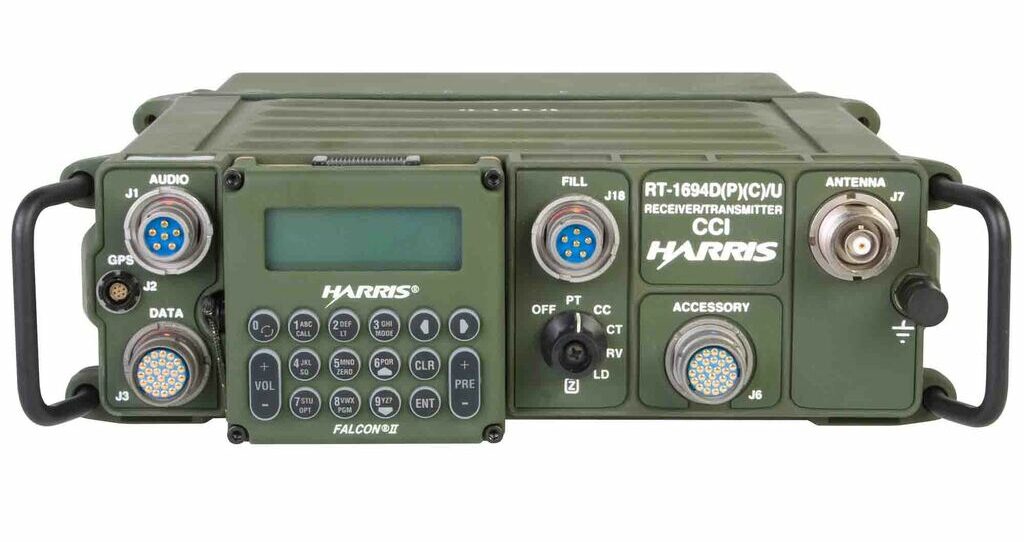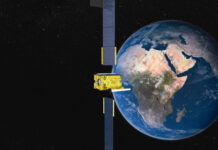The United Kingdom’s Ministry of Defence (MoD) is forging ahead with an important overhaul of its strategic high-frequency communications.
To some, it may seem an insignificant milestone, but on 9 July 2023, the UK’s Defence High Frequency Communications Service (DHFCS) celebrated its 21st birthday. The DHFCS provides a nationwide and international high frequency (HF) strategic radio communications backbone. This backbone links military installations in the UK and abroad to one another using HF links. However, despite the birthday celebrations, the DHFCS is in its twilight years and will soon be replaced. In time, the DHFCS will be superseded by the Defence Strategic Radio Service (DSRS).
HF radio has been widely employed by the military since before the Second World War; they use a specific part of the electromagnetic spectrum – frequencies of 3–30 MHz. Transmissions across this waveband have properties not found in others, particularly some of the wavebands further up the radio section of the spectrum. HF signals aimed towards the ionosphere cannot penetrate this layer of the atmosphere. The ionosphere is between 48–965 km above sea level. When an HF transmission hits the ionosphere, it is reflected back to Earth. If you aim the transmission at an angle, it will bounce off the ionosphere at a corresponding angle. An oft-used analogy is a snooker ball aimed obliquely towards the snooker table’s cushioned side. The ball hits the cushion and bounces off at an angle, allowing the player to hit the ball they are aiming for indirectly reducing the risk of a foul.
Radio communications are usually restricted by an antenna’s line-of-sight. Suppose you are 2 m tall, standing in a flat field holding a 1 m antenna parallel to the ground. In this position, your radio signal will travel about 7 km in a straight line relative to the ground. However, beyond this, due to the curvature of the Earth, the distance between the signal and the Earth’s surface will progressively increase. In theory, and depending on its power, the signal eventually reaches a point where it continues into space.

Credit: Logistics Cluster
SATCOM versus HF
The ability of HF signals to ‘bounce’ off the ionosphere is a major advantage compared to other radio frequencies further up the electromagnetic spectrum. Using the ionosphere lets HF radio signals achieve intercontinental ranges rivalling those achievable with satellite communications (SATCOM). In fact, the ionosphere can be thought of as a global, naturally occurring satellite dish. After all, it works in a very similar way to its artificial equivalents. A key benefit of HF compared to SATCOM is that the bandwidth is free to use.
Militaries wanting to employ satellite communications must procure a satellite constellation and associated infrastructure to provide global beyond line-of-sight (BLOS) links which can cost billions of dollars. A less-expensive alternative is to lease SATCOM bandwidth from the private sector. Leasing still requires a financial outlay, and the secure channels which armed forces rely on may incur additional costs. Moreover, leased bandwidth can leave the user at the mercy of the private sector. The leaser could also decide to switch off the service if they do not agree with the conflict a military finds itself embroiled in. Threats such as these are not idle. Witness the furore in 2023 directed against Elon Musk, founder, chair and chief technology officer of SpaceX. Musk had threatened to end Ukraine’s access to SpaceX’s Starlink SATCOM network after thousands of Starlink terminals had been supplied to Ukraine following Russia’s February 2022 invasion. Moreover, SATCOM companies can go bankrupt. On 27 March 2020, OneWeb Global, which was planning to build a constellation of low Earth orbit satellites providing global broadband internet services, indeed went bankrupt, though the company was rescued in July 2020 by a consortium comprising the British government and Bharti Group. Since the ionosphere is free to use, military HF users must simply purchase the radios and equipment needed to provide secure communications.
It should be stressed that HF does have some disadvantages, most notably regarding bandwidth. NATO and the US Department of Defense (DoD) standards govern military HF bandwidths and NATO’s Standardisation Agreement 4539 (STANAG-4539) provides up to 200 KHz of HF bandwidth for use by Alliance members. Such bandwidths can theoretically provide data rates of up to 240 Kbps. The US DoD’s Military Standard 188-110C provides bandwidths between 3–24 KHz, which are able to provide data rates 0.6–120 Kbps. To put things in perspective, fourth generation (4G) cell phones can achieve bandwidths of 173 Mbps – over 1,441 times more at the high end! A further disadvantage is that HF relies on the ionosphere to achieve over-the-horizon ranges.
The ionosphere is a capricious place and highly vulnerable to solar activity. Phenomena such as solar flares – localised emissions of the sun’s electromagnetic radiation – can cause difficulties. Corona mass ejections, where there is an eruption of the sun’s magnetic field and an accompanying mass of plasma (ionised gas), can be similarly problematic. Mathematics can be used to anticipate solar activity with reasonable accuracy to assist HF operators, and these calculations can be made rapidly using software. Nonetheless, the sun’s behaviour cannot be influenced. Thus, HF radio is forced to live with these challenges. The considerable skill required to use HF radio, and the unique behaviours of the signal and ionosphere, can help make HF traffic difficult to jam. As with SATCOM, communications and transmission security protocols such as encryption can help safeguard HF traffic against eavesdropping.

Credit: Google Maps
Despite these challenges, the capabilities of HF compared to SATCOM continues to make it attractive as a complement to the latter. Arguably, it is for these reasons that the UK MoD has been an enthusiastic user of HF for trunk communications for many years. In 2003, several disparate HF networks operated by the UK armed forces were consolidated. This consolidation resulted in the creation of the Defence High Frequency Communications System (DHFCS), which was declared operational by the MoD in 2008. The network provides communications between British bases at home and abroad. HF was not the only communications mechanism military facilities possessed to remain in contact, as conventional trunk telecommunications also played a role. Having both HF and standard landlines available provided some redundancy. Landlines can also be used if HF is problematic, perhaps because of environmental factors, and vice versa.
The original DHFCS contract was awarded to VT Group, now part of Babcock, in 2003 and was worth USD 430.9 million in 2023 values. The network was ready for use by 2008 and carried several different types of traffic. Clear and secure voice and data moved across the DHFCS. The network also played a role in carrying traffic necessary for the UK’s strategic nuclear deterrent. Open-source information states that this includes secure nuclear command and control (C2) data.
There are 12 facilities in the UK and abroad that support the DHFCS. The network is controlled from the DHFCS Forest Moor base, located in North Yorkshire. A backup control station is provided at Kinloss Barracks in Scotland. DHFCS transmitters are sited at RNAS Rattray Air Base at Crimmond in eastern Scotland, RNAS Inskip in northwest England and at St. Eval in the southwest of the country. Receivers are located at Forest Moor, Kinloss Barracks and Penhale Sands in Cornwall, southwest England. DHFCS transmitter and receiver sites can also be found on Ascension Island and on the Falkland Islands in the South Atlantic. The UK’s Akrotiri Sovereign Base Area on Cyprus also hosts DHFCS facilities.
In addition to linking these facilities, the DHFCS links outwards to similar, allied HF networks. Publicly available information notes that the system connects to the US Air Force High Frequency Global Communications System (HFGCS) at RAF Croughton airbase, central England. The HFGCS is mainly used by the United States Air Force (USAF) and the US Navy (USN). A key HFGCS role is to transmit Emergency Action Messages to USAF and USN assets supporting the US nuclear deterrent. Alongside this US link, the DHFCS maintains a link to the Australian Defence Force’s HF Communications System.
New networks
The DHFCS is now making way for a new system in the guise of the Defence Strategic Radio Service (DSRS). In September 2021, DHFCS supplier Babcock won a USD 165.8 million contract for the DSRS’s implementation. The MOD’s press release announcing the news said that the contract had a nine-year duration. Whether this is the lifetime of the system, or the duration of Babcock’s involvement with the DSRS was not specified. Few details were given regarding the DSRS’s architecture in the press release.

Credit: Babcock
Nevertheless, the document did contain some important clues. For example, the press release stressed the utility of HF to provide connectivity to deployed units over BLOS ranges. This implies that the DSRS may also provide HF connectivity beyond British warships and military aircraft. The Royal Navy and the Royal Air Force have both been avid users of the DHFCS and its predecessors. This enthusiasm is understandable reasons given HF radio’s global reach. However, will deployed British land forces using HF radios also connect with the Defence Satellite Communications System (DSCS)? Open-source information notes that the Bowman tactical radio system, used primarily by the British Army, comprises an HF radio. Bowman’s L3Harris’ UK/PRC-325 20-Watt/W backpack and UK/VRC-328/9 100W fixed site/vehicular radios are anglicised versions of the company’s AN/PRC-150 HF transceiver. It is unknown whether these radios can access the DHFCS or whether they will be able to use the DSCS network. As HF transceivers, it is more than likely that they can. Both the UK/PRC-235 and UK/VRC-328/9 are likely to be replaced over the coming decade as the British Army revamps its land forces communications systems via its troubled Project Morpheus initiative.
Another interesting clue regarding the DSRS’s configuration was the press release’s revelation that, “the radio system will also support civilian tasks when required, including mountain rescue and civilian aircraft emergency communications.” What this provision means in practice was not specified. It is possible that the DSCS network will continually monitor certain HF wavebands for distress messages. In 2005, the International Amateur Radio Union (IARU) agreed that some amateur bands would be reserved for emergency traffic. Today, the Global Emergency Centre of Activity (GECOA) safeguards several frequencies to this end. The IARU is the custodian of the spectrum made available by the International Telecommunications Union (ITU) for amateur – or ham radio – enthusiasts (often colloquially referred to as ‘radio hams’). The ITU is the global custodian of the radio spectrum. Frequencies of 3.750 MHz, 3.985 MHz, 7.060 MHz, 7.240 MHz, 14.300 MHz, 18.160 MHz and 21.360 MHz are reserved for emergency traffic, so people can make direct calls for help on these frequencies. Alternatively, ham radio enthusiasts can use these channels to transmit, receive and relay emergency traffic. The 14.300 MHz frequency is reserved for the global Maritime Mobile Service Network. It appears the DSRS’s mandate has been expanded, vis-à-vis the DHFCS, to support humanitarian tasks beyond its core military functions.

Credit: L3Harris
Implementation
The MoD did provide some additional information regarding DSRS implementation, telling ESD that the new system was essentially an extension of the capability provided via the DHFCS programme. The ministry insisted that the DSRS would form part of a wider “layered communications plan that also includes (SATCOM)”. The statement confirmed that the DSRS will be interoperable with other UK government organisations, including His Majesty’s Coastguard, and alongside “international partners and allies”. The MOD envisages that the DSRS architecture will continue to “keep pace with modern technology developments.” In terms of implementation, the new system should be in full service by 2030, the statement added.
Given the challenges experienced by the UK’s Project Morpheus tactical communications system, it is refreshing to see that the DSRS’s introduction appears to be moving smoothly and at pace. Once in service, it will complement the additional SATCOM capabilities the UK is destined to receive via the Skynet-6 initiative. The Skynet-6A satellite is the first spacecraft in an anticipated new constellation and will complement the existing Skynet-5 constellation, which will eventually be replaced. The introduction of the DSRS capability gives the UK important redundancy in the strategic communications domain. This redundancy is being achieved at comparatively low cost, yet providing a robust and secure, communications architecture. The MoD’s continued embrace of HF communications, and its unique attributes, is to be congratulated.
Thomas Withington



